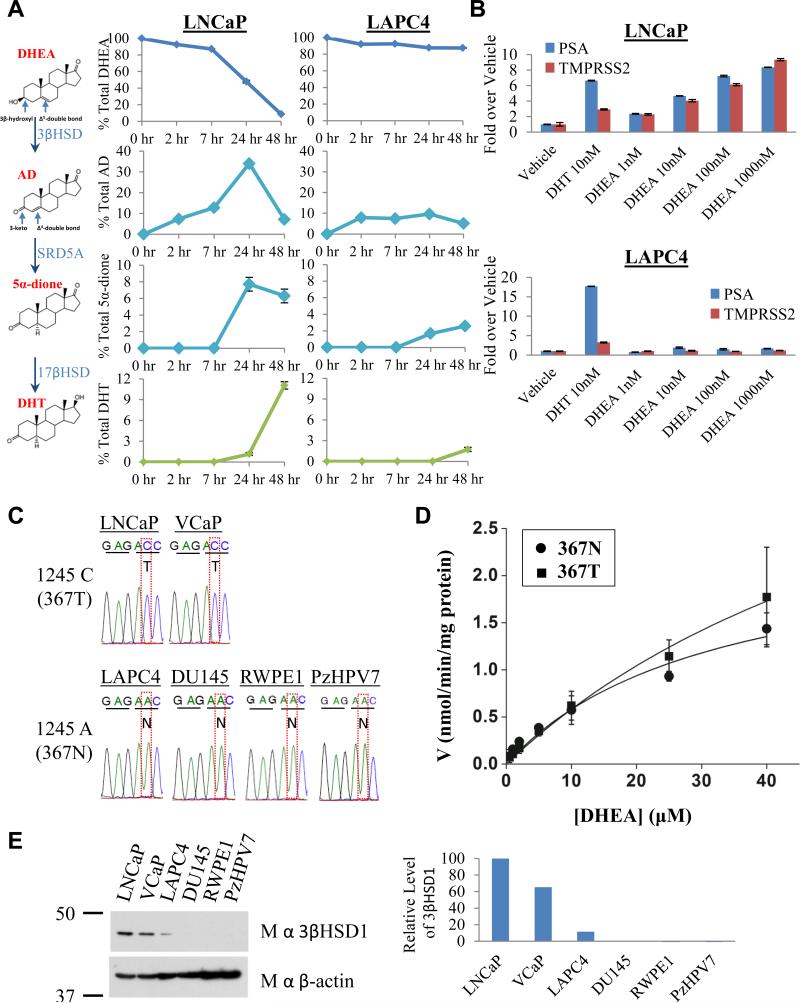Fig. 1.
The 3βHSD1(367T) protein encoded by mutant HSD3B1(1245C) increases flux from DHEA to AD, which is otherwise rate-limiting, en route to DHT and expression of AR-responsive genes. (A) Metabolic flux from [3H]-DHEA (100 nM) to AD and downstream to 5α-dione and DHT is robust in LNCaP but limited in LAPC4. The metabolic pathway and steroid structures are shown, indicating sites of modification by 3βHSD1 in converting DHEA to AD. Steroids were quantitated at the indicated time points by HPLC. (B) DHEA induces PSA and TMPRSS2 expression in a concentration-dependent manner in LNCaP but not LAPC4. Expression was assessed by qPCR and normalized to RPLP0 and vehicle control. (C) A substitution converting A → C at position 1245 in HSD3B1 occurs in LNCaP and VCaP encoding a change from N → T at amino acid 367 in 3βHSD1. (D) Wild-type 3βHSD1(367N) and 3βHSD1(367T) have comparable kinetic properties. Michaelis-Menten plot of DHEA metabolism with 3βHSD1(367N) (circle) and 3βHSD1(367T) (square) enzyme. The Km for 3βHSD1(367N) and 3βHSD1(367T) protein are 32 and 77 μM, respectively. (E) Endogenous expression of 3βHSD1(367T) is associated with increased protein quantity. Error bars in A, B and D represent the SD from experiments performed in triplicate. See also Figure S1.

